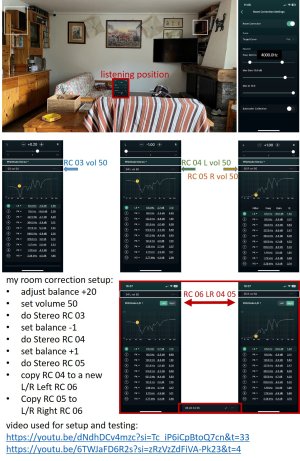Hi @Smartplug
Good question. I'll tell you my impressions. As I said, the differences between the unequalized sound, the stereo equalization, and the per-channel equalization are very subtle. The sound, compared to the unequalized sound, has not changed totally.This could make me think that RC did a good job. If I had had a completely different sound I would have been wary.
The main difference I found between the Stereo EQ and the Per-Channel EQ concerns the reproduction of the bass. In the stereo EQ, the bass, for me, was perhaps a little too cut compared to the non-EQ sound.
In the per-channel EQ,
I am glad to hear that your attempt went well. Thanks for sharing your experience with us.
BTW, I think I was very wrong about the "Audio Channel" in WHA. To summarize, this setting is totally different from the balance bar.
Stereo: L/R signal out of L/R speakers.
Left Channel: only L signal is output from the L/R speakers.
Right channel: only R signal is output from the L/R speakers.
Mono: Outputs a mono signal from the L/R speakers.
Therefore, it is normal for sound to always come out of both the left and right speakers. Sorry for the mistake.

